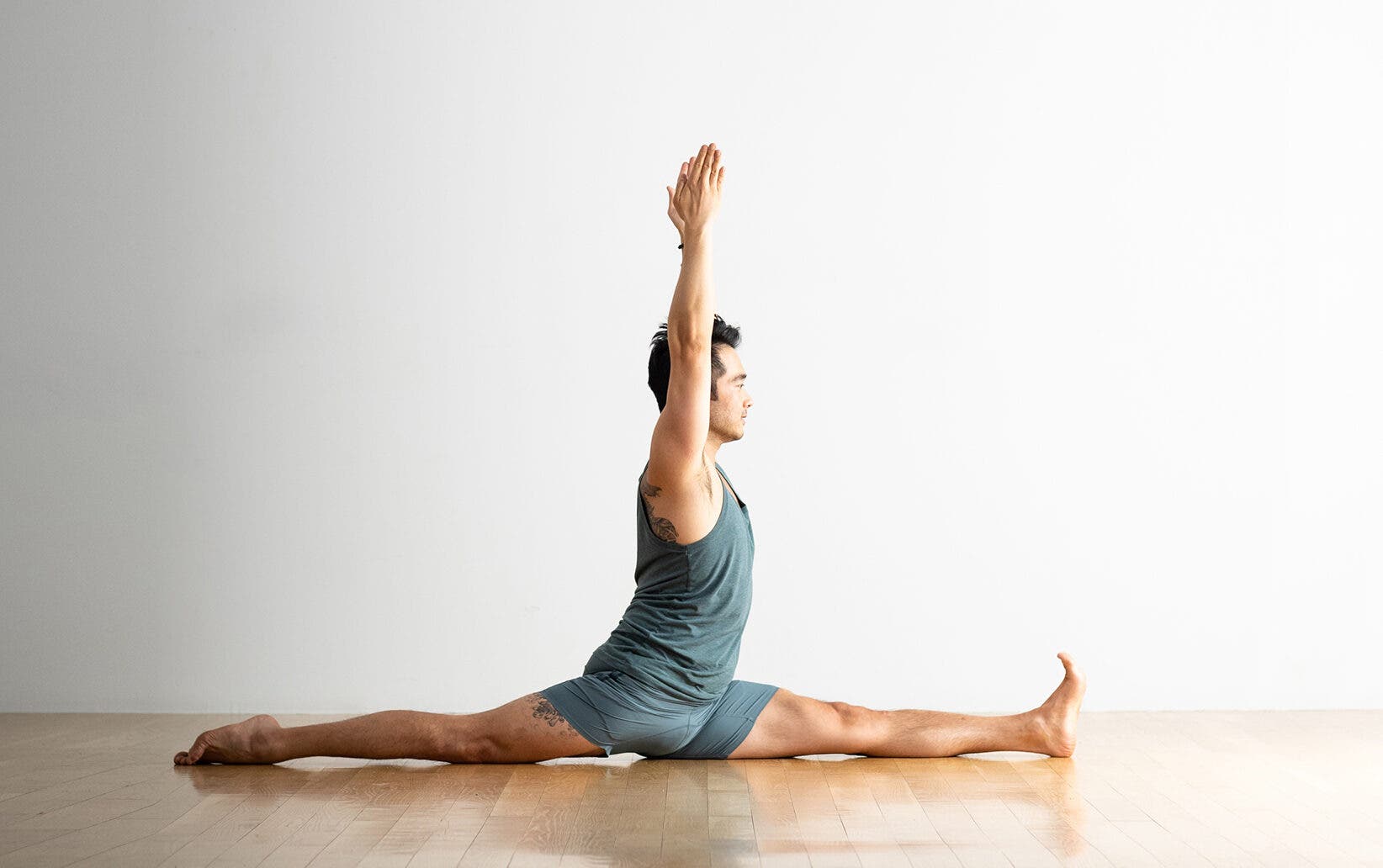6 Essential Stretches for Tight Hamstrings and Hip Flexors

(Photo: Andrew Clark)
Ever find yourself fixated on stretching a particular part of your body? When your hamstrings are tight, for example, you might zero in on practicing hamstring stretches. Same goes for your hips. But despite your desire to target one area, that’s not how your body works.
Everything is interconnected.
Take those hamstrings. Understanding exactly how they and nearby muscles support one another isn’t essential for you to know you need to practice stretches for tight hamstrings in order to experience relief. But understanding a little about how your hip flexors can contribute to the problem—and, in turn, help alleviate it—enables you to more effectively address tension throughout your lower body.
Anatomy of Tight Hamstrings and Hip Flexors
The degree to which you can benefit from hamstring stretches is determined, in part, by the flexibility and strength of your hip flexors.
The hip flexors are a group of muscles along the front of your thighs that includes the psoas major, rectus femoris, iliacus, pectineus, and sartorius. These originate at the lower back or pelvis, and attach to the femur (thigh bone). The contraction of these muscles causes forward flexion, or bending at the hip joint, as well as lateral flexion, or bending the torso to the side.
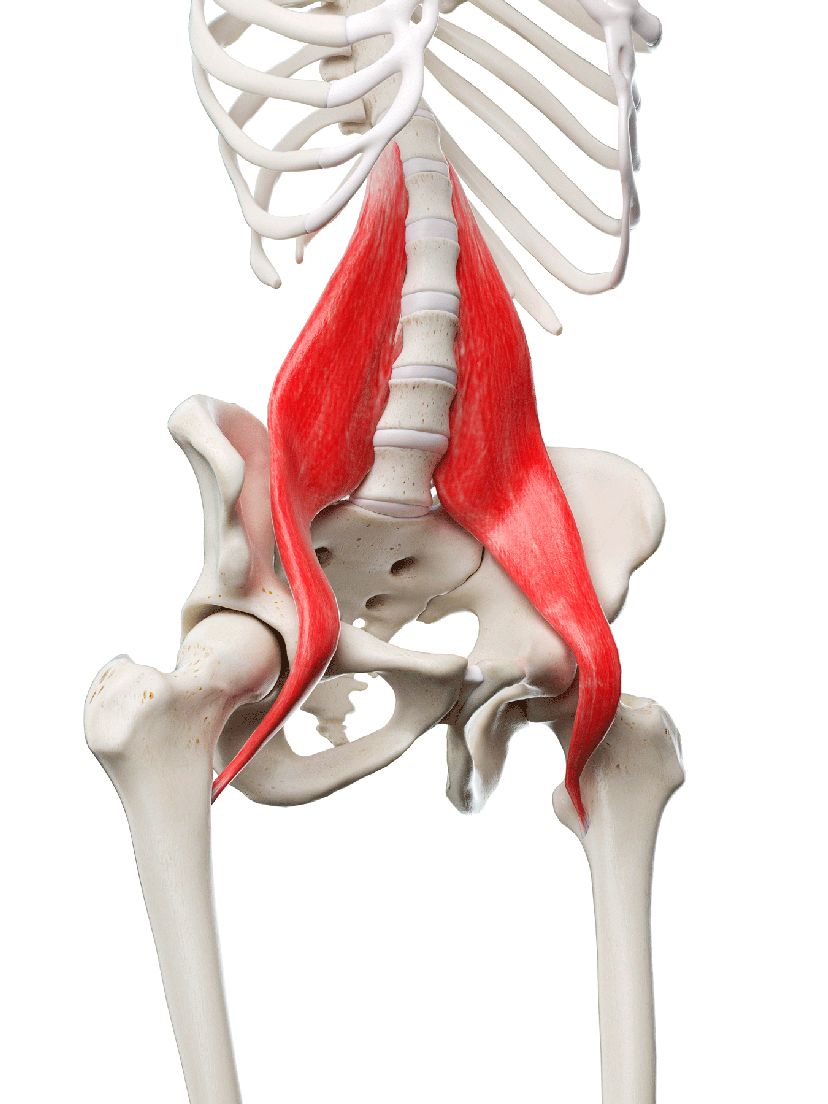
The hamstrings fall on the opposite side of your thigh bone. They comprise three muscles that originate on the ischial tuberosity (your sit bones), run along the back of the thigh, cross behind the knee joint, and attach to the lower leg. When your knee bends, the hamstrings contract. When your leg straightens, they lengthen.
When hip flexors contract, the hamstrings stretch. For example, in a forward bend, the hip flexors shorten to help you fold forward at your hips. This lengthens the hamstrings. The same thing happens when you draw your knees toward your chest.

But if the hip flexors are tight or weak, this can lead to an anterior (forward) tilt of the pelvis, which in turn creates constant tension that strains the hamstrings and low back.
6 Stretches for Tight Hamstrings and Hip Flexors
These hamstring stretches also lengthen and strengthen your hip flexors, resulting in greater relief than you could experience by focusing exclusively on one muscle group.
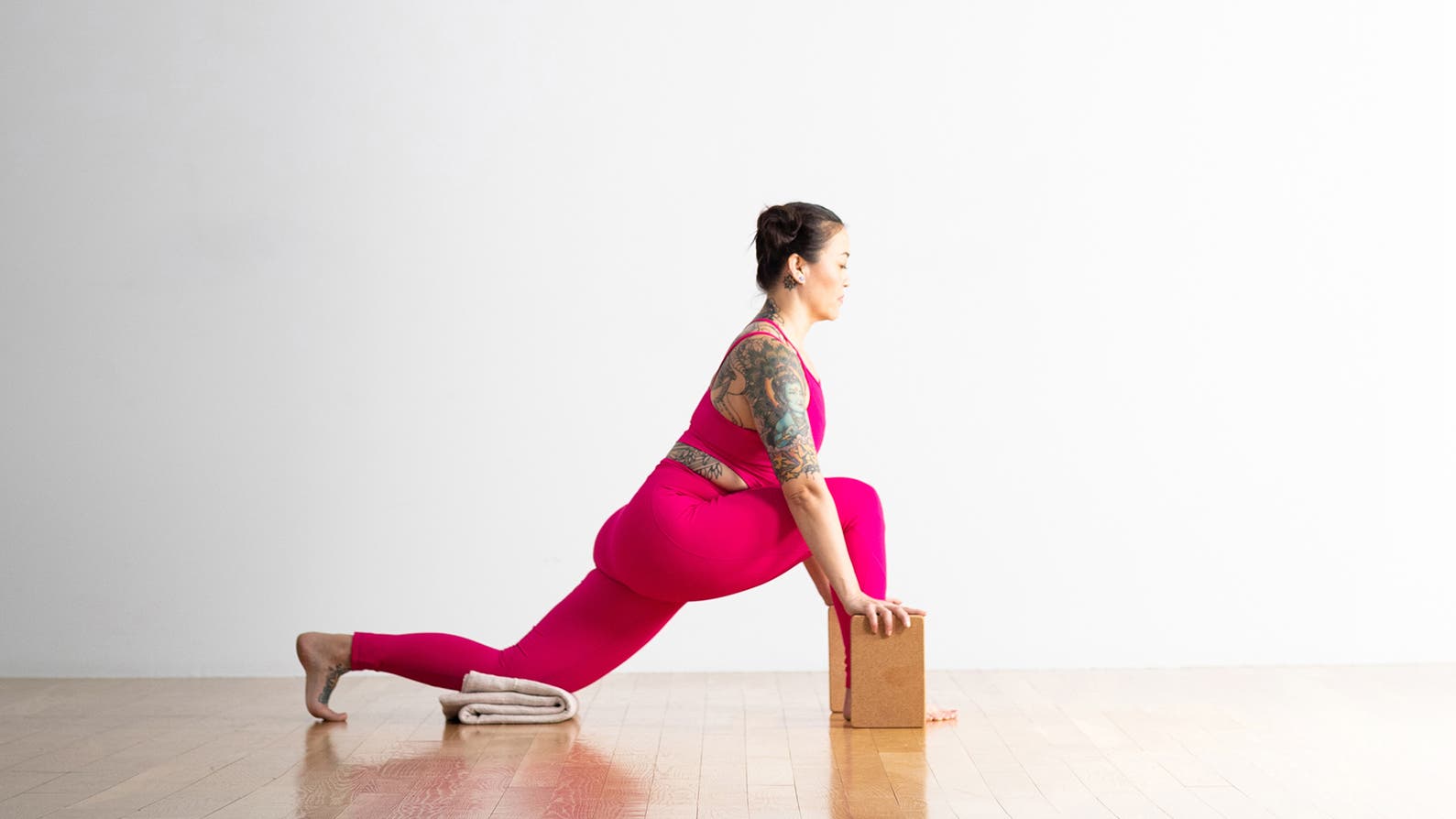
1. Low Lunge (Anjaneyasana)
You experience a stretch in the hamstrings of your front leg and the psoas muscle of your back leg in Low Lunge. It’s an especially effective stretch for athletes, particularly runners, as it helps strengthen your front leg and stabilize your ankle, knee, and hip joints.
How to:
- From your hands and knees or Downward-Facing Dog, step your right foot forward and lower your back knee to the mat or a folded blanket.
- Lift your chest upright so your shoulders are stacked over your hips. Reach your hands overhead or place your hands on blocks alongside your front foot in Low Lunge. For an extra hamstring challenge, imagine dragging your front heel toward the back of the mat without moving your foot. For a more intense hip flexor stretch, subtly lift your pubic bone toward your navel. Breathe here. To come out of it, press your hands into the mat or blocks and push back to your hands and knees. Repeat on the other side.
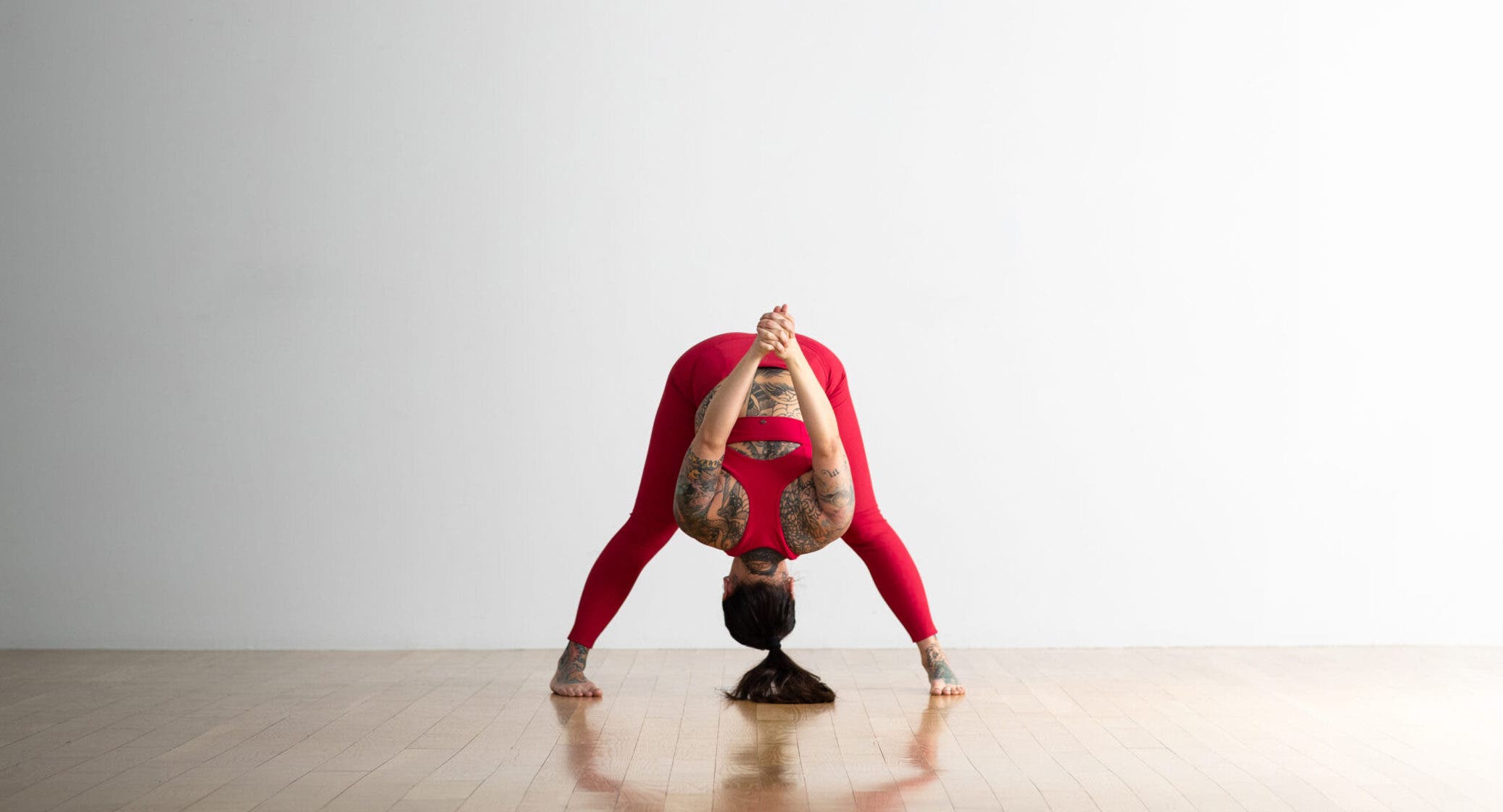
2. Wide-Legged Standing Forward Bend (Prasarita Padottanasana)
This posture stretches the hamstrings and hip flexors of both legs. Though you might expect the psoas muscle to contract in a forward bend, keeping your upper body slightly separated from your legs in Wide-Legged Standing Forward Bend (with your hands on the mat or on blocks) allows it to lengthen.
How to:
- Stand in a wide-legged stance with your feet 3-4 feet apart.
- Hinge forward at your hips and place your hands on the mat or blocks. Press the outer edges of your feet into the mat. Release the crown of your head toward the mat. Draw your shoulders away from your ears in Wide-Legged Standing Forward Bend. For a more intense hamstring stretch, practice the pose with the backs of your thighs and heels against a wall. Breathe in whichever variation you take. To release, slowly roll up.
3. Splits or Monkey Pose (Hanumanasana)
The hamstrings of your front leg and the psoas muscle of your back leg experience a noticeable stretch in Splits. This posture isn’t part of everyone’s yoga practice, but there are variations that still deliver the same benefits for tight hamstrings. You can practice Half Splits instead.
How to:
- Come into Low Lunge with your left foot forward.
- Straighten your front leg and inch that heel forward. Keep your hips stacked over your back knee and your shoulders stacked over your hips (use blocks underneath your hands if needed). Then inch your back knee behind you. Draw your navel toward your spine as you continue to reach your left leg forward and your back leg behind you in The Splits. For a less intense stretch, place a block underneath your front hamstring. Point your front knee toward the ceiling. Draw your shoulders away from your ears in Splits. Breathe here. To come out of it, shift your weight to your outer left hip and bend your back leg. Return to Low Lunge and repeat on the other side.
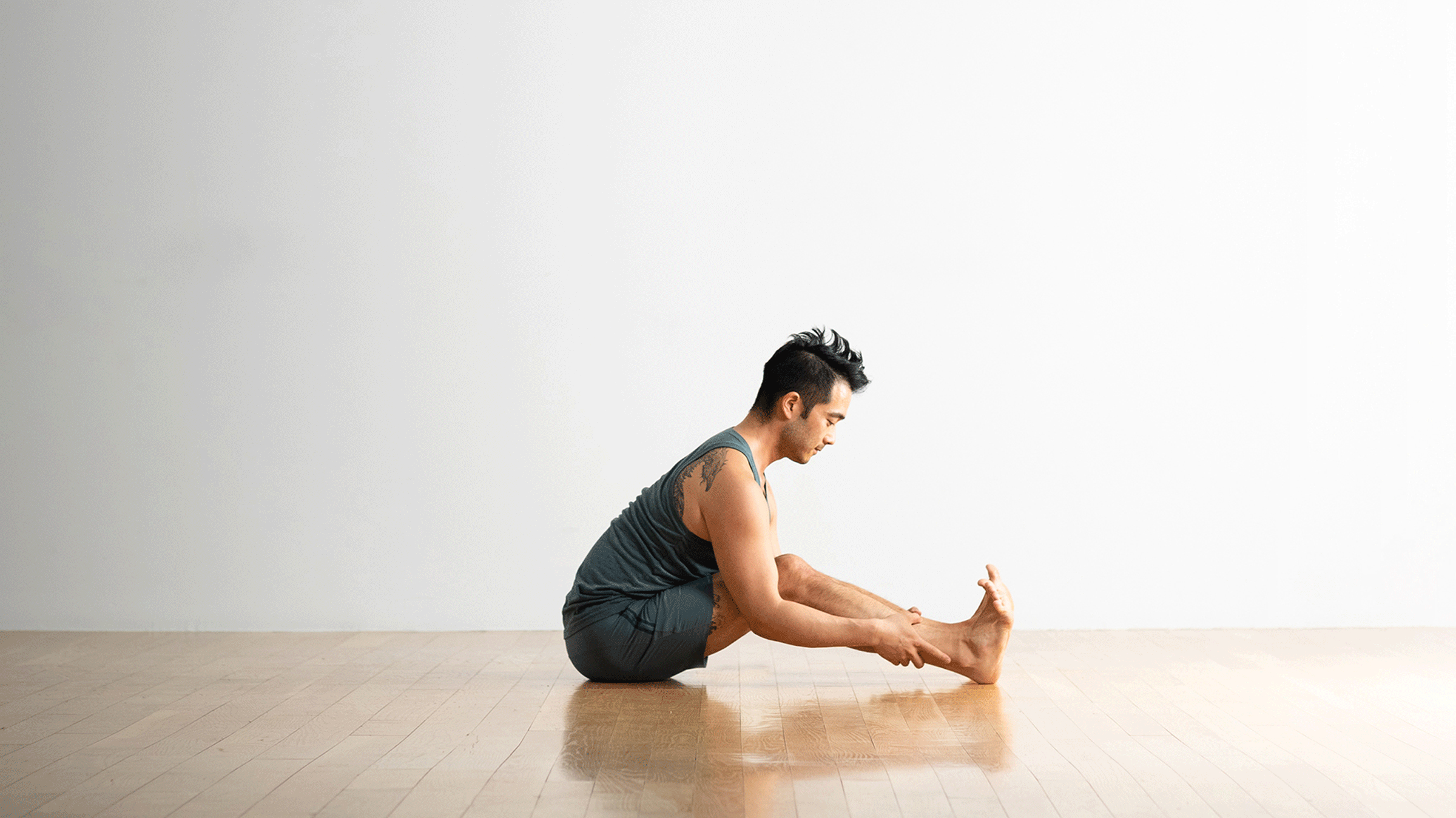
4. Seated Forward Bend (Paschimottanasana)
Forward folds are poses that stretch the hamstrings of both legs and help strengthen your hip flexors. Seated Forward Bend also helps improve flexibility in your spine.
How to:
- Sit with your legs straight in front of you. If you have tight hip flexors or low back pain, sit on the edge of a folded blanket to prevent rounding in your lower back.
- Lengthen your spine and inch your sitting bones back slightly. Flex your feet, then hinge forward at your hips, reaching your chest toward your legs. Place your hands on your thighs or calves, loosely hold onto your outer feet, or wrap a strap or belt around both feet and hold on to either end of it. Keep as much of a bend in your knees as you need if your hamstrings are tight. Lengthen your spine or round it and release your chin toward your chest in Seated Forward Bend. For a more intense stretch, press your heels forward and your thighs into the mat. Breathe here. To release, slowly roll up.

5. Wide-Angled Seated Forward Bend (Upavistha Konasana)
It’s easy to feel that you should force this stretch. On the contrary, your muscles release more when you stop trying, relax your muscles, and simply allow the stretch to happen.
How to:
- Sit with your legs extended straight in front of you. Separate your legs as wide as is comfortable. Flex your feet.
- Hinge forward at your hips and, keeping your spine straight, walk your hands out in front of you on the mat or place them on blocks in Wide-Angled Seated Forward Bend. Keep your spine straight or allow it to round. If you round your spine, release your neck so your head hangs. Draw your shoulders away from your ears. For a less intense hamstring stretch, bend your knees. Sliderolled blankets or towels beneath your knees for added support. Breathe here. To release, slowly walk your hands toward your body and lift to an upright position.
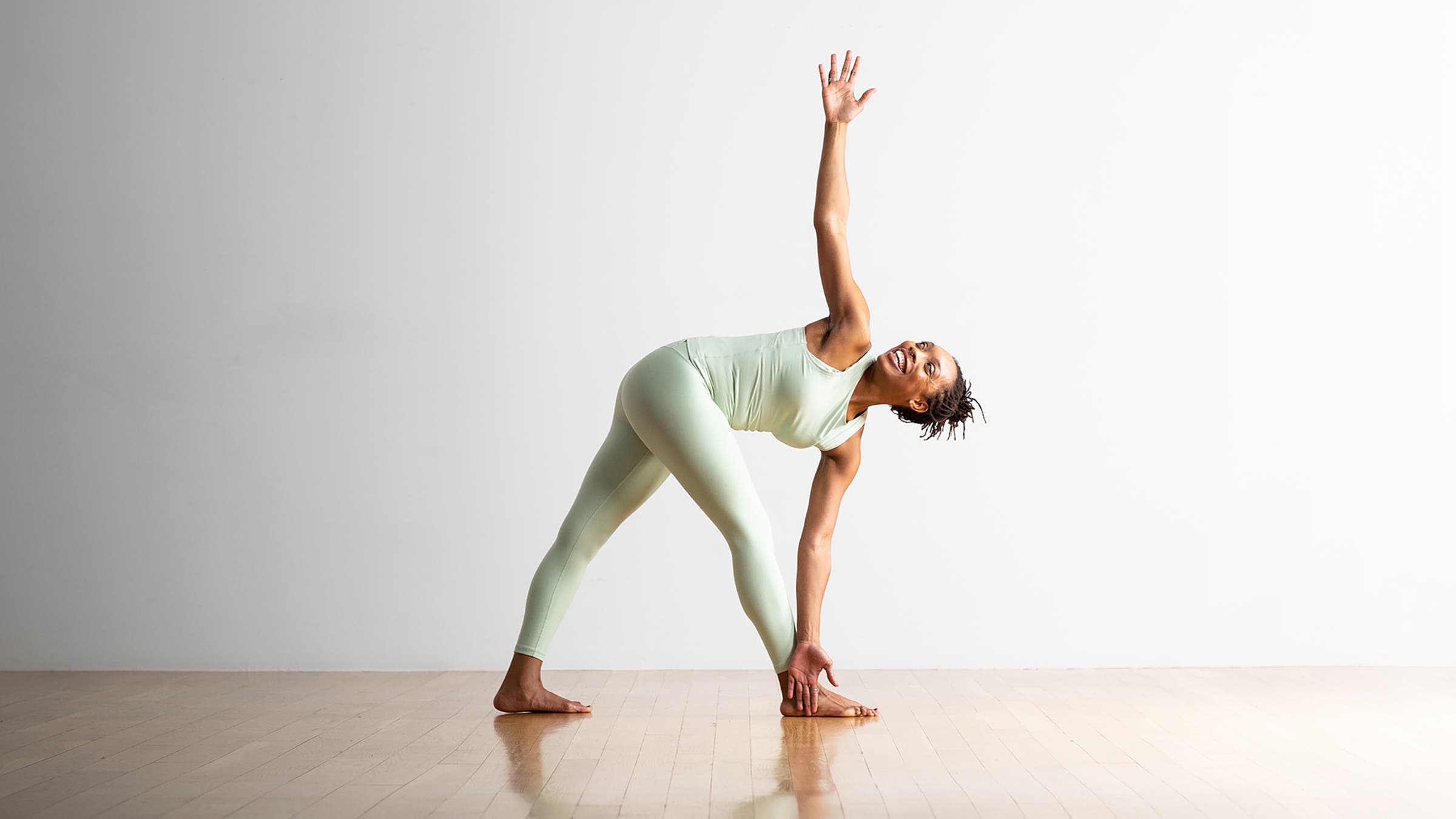
6. Revolved Triangle Pose (Parivrtta Trikonasana)
This pose stretches the hamstrings of both legs and strengthens the hip flexors. Tip: Tight or weak hip flexor muscles can cause rounding in your low back in Revolved Triangle Pose and create additional stress on your hamstrings. Make sure to use blocks to support your bottom hand to avoid rounding your low back.
How to:
- Stand tall. Step your right foot forward 2-3 feet.
- Reach your arms overhead and hinge forward at your hips. Twist your chest to the right and bring your left hand to the mat or to a block alongside your outer right foot. Reach your right arm toward the ceiling or bring your right hand to your hip in Revolved Triangle Pose. Press your feet into the mat. Don’t forget to breathe. For a more intense hamstring stretch, reach both hands to your outer front foot. To come out of it, press both feet into the mat and reach your right arm toward the ceiling to help you return to an upright position. Step your feet together and repeat on the other side.
This article has been updated. Originally published August 18, 2022.
